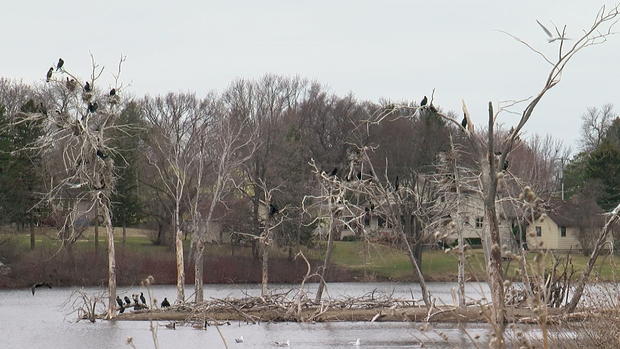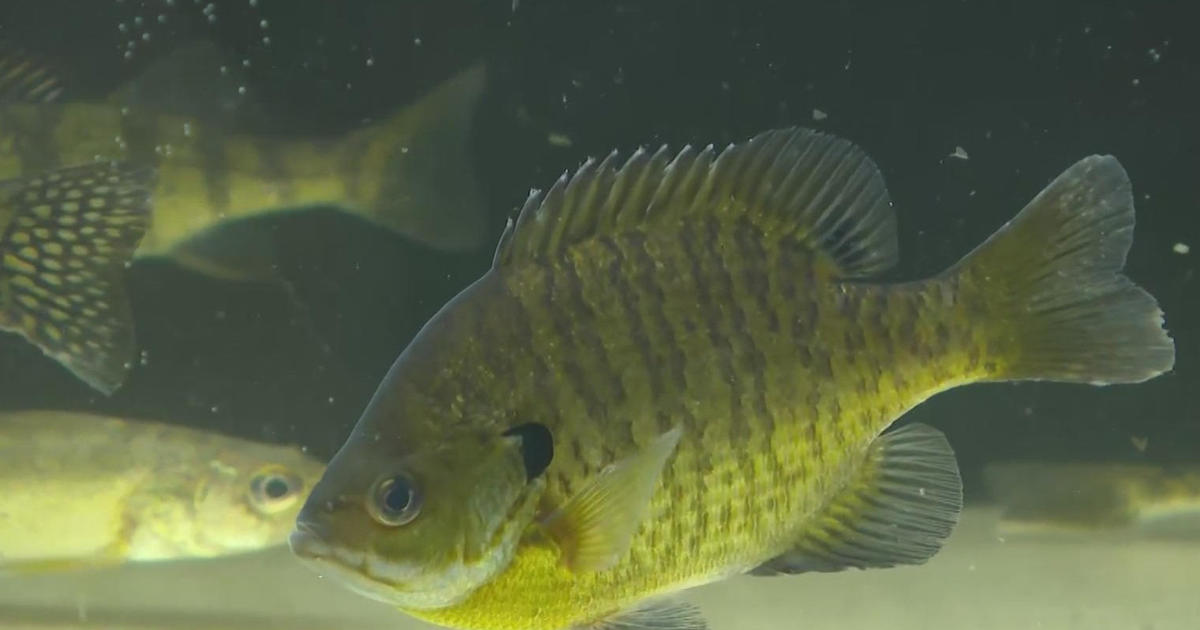Birds Of Different Feathers Flock Together At Fergus Falls Rookery
FERGUS FALLS, Minn. (WCCO) -- It's not very often that you can get up close and personal with 20 different species of birds, right in the middle of town, but that's the case in a west central Minnesota at the Fergus Falls rookery.
An otter may be the official mascot of Fergus Falls, but it's not the most vocal animal. Like a scene out of an old Alfred Hitchcock movie, birds of different feathers flock together on a little island in the middle of town.
"What's really unusual about this rookery in Minnesota, well anywhere really, is that you can drive right up to it," Molly Stoddard, of the U.S. Fish and Wildlife Service, said. "Fast food across the street, drive-thru birding right here."
Stoddard said the birds moved in years ago because of the food source, and because Grotto Lake Island provides protection from predators. Every spring egrets, herons, and other birds call this home. So far, this year, it's become a city of cormorants.
"When you see the ... color inside the mouth it is an amazing turquoise blue," Stoddard said. "They sound strange. So do the egrets."
While the egrets may be more visually-appealing, a cormorant will put just about anything in its nest, even junk. When it comes to trash and litter, they're pretty good about helping to pick that up.
"Every day is Earth Day for cormorants in the spring," Stoddard said.
And throughout the day, people pull up by the dozens to take a look and a listen.
"They will drive here for hours to come and see this rookery," Stoddard said.
Wayne Perala and other photographers have been flocking to the island since the birds first arrived, accumulating an abundance of eye-catching photos.
"It's really a once-in-a-lifetime thing to get them that close," Perala said. "During waterfall migration you never know what's going to show up here. We had loons here a couple days ago."
About 200 fourth- and fifth-graders use the rookery for field trips. It's an outdoor classroom of a different sort.
"It's one thing to read about it in a book, but to be there in person and observe for yourself is a really rich learning experience for them," Stoddard said.
Over time, windstorms have taken their toll, and ironically, the birds themselves are partially responsible for what's left of the trees.
"The birds activity, they're defecating and that's coating the leaves and eventually killing the trees," Stoddard said.
It's unclear just how much longer the animals will be here. But whether people love them or wish they'd fly back south, one thing is for sure -- the birds are an ornithological oddity.
"That's kind of interesting in and of itself and exciting is 'What will happen?'" Stoddard said. "We'll get to observe it firsthand."
Stoddard said someone cut down branches and smaller trees on the island, which may be one reason they haven't seen as many egrets yet this year. But she says that could change once the weather gets warmer.




